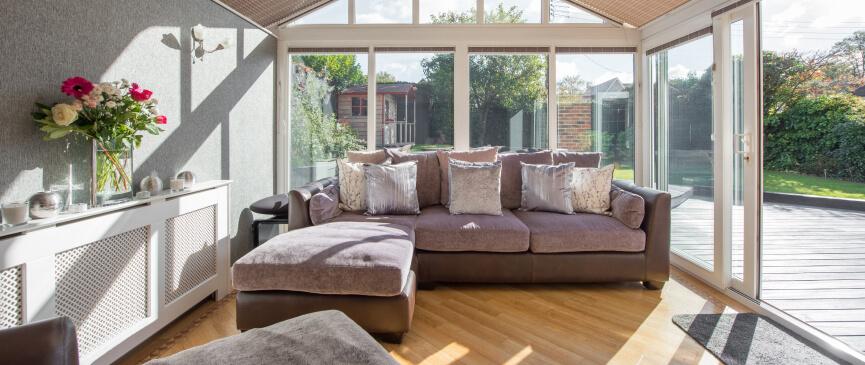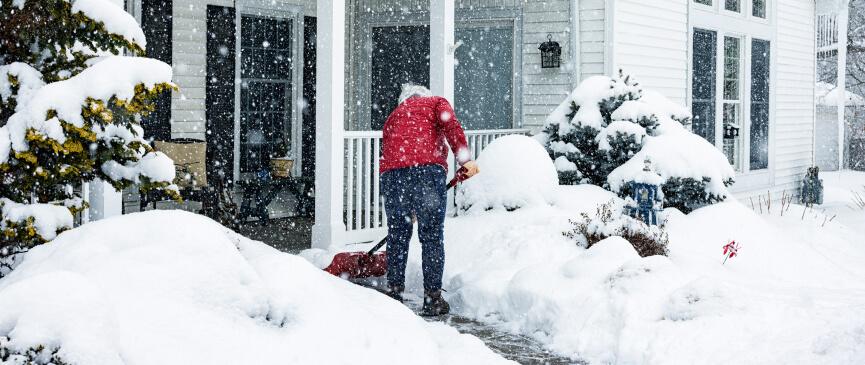How to Keep Your Home Warm When It’s Chilly Outside
Learn how you can keep your home warm even when the temperature outside drops.
As the weather gets chilly, it can be challenging to keep your home warm inside. Whether you use a gas furnace for heat or an electric heat pump, the following tips can help keep you feeling cozy while saving on energy bills.
Hire an Expert
Insufficient insulation and leaky ductwork are two of the main culprits when it comes to losing warm air or having hot and cold spots in your house. If you’re handy, you might be able to take on these tasks as a do-it-yourself project — but if you don’t relish the idea of crawling around in your attic, it might be worth hiring an expert. An insulation professional can install the appropriate materials right where they’re needed, while a visit from a local HVAC expert or a home energy auditing company will provide an even more comprehensive review of your systems. Contact your local utility company for a referral (and possibly a discount!), or visit Energy.gov for additional home energy assessment resources.
Plug Your Gaps
The areas around doors and windows are another common culprit for cold air intrusion. The good news is that even a novice DIYer can solve the problem. Check weather stripping on external doors, and replace anything that’s not sealing correctly. With windows, gaps can be plugged easily with foam or caulk. Note that doors and windows aren’t the only escape route for warm air from the home: Areas around exterior plumbing and exterior electric outlets should be sealed too.
Don’t Accidentally Exhaust Your Warm Air
Everyone loves a crackling fire, but double-check that your fireplace damper isn’t exhausting expensive warm air when it’s not being used. Another area to examine is your kitchen exhaust hood; it should only be allowing air out when you’re using the fan. Consider covering it if that’s not the case.
Do a Windows Update
Even if they’re properly sealed, windows themselves can cause heat loss. If it’s time for an update, energy-efficient windows or storm windows are the most effective but pricier solution, while shrink-wrap kits can provide insulation at a lower cost. How you decorate your windows can make a big difference as well. Energy-efficient window coverings such as thermal curtains or insulated cellular shades are the top options, but Energy.gov advises that even conventional draperies can reduce heat loss up to 10% when they’re closed.
Check Your Air Flow
Your HVAC system needs free-flowing air to ensure that it’s working efficiently and not overworking the equipment. Check your vents to verify they’re not partially closed or blocked, and make sure you’re replacing your air filters more often during times of heavy use.
Keep Your Home Warm with Preventive Maintenance
Preventive maintenance will ensure that your gas furnace or heat pump is running at optimum efficiency — and it can head off problems more affordably than the cost of a new furnace. When the winter season gets busy, you don’t want to be making a call that “the furnace is not turning on.” So run your system a few times before it gets too cold outside. If you use electric heat, don’t forget that heat pump efficiency decreases along with temperatures; the air coming out of the vents may seem a bit cooler than usual, but it’s still getting the job done.
Four More Tips to Warm Up Your Home
After addressing caulking, insulation, ductwork, and servicing, it’s still possible your gas furnace or heat pump won’t be keeping your home as warm as you’d like. There are several options to consider that will keep you toasty all winter — for years to come:
- Increase your energy efficiency: Especially if you have an older heating system, consider replacing it with a gas furnace with multiple heating stages or a variable speed gas-electric hybrid system.
- Install a smart thermostat: Smart thermostats such as the American Standard AccuLink Platinum 1050 not only allows you to set an energy-saving schedule for when you’re home or away, you can also change temperatures remotely with the American Standard Home app from your mobile device.
- Balance your heating: Let’s face it, hot and cold spots are uncomfortable and annoying! The American Standard AccuLink zoning system uses a network of thermostats, sensors, and motorized dampers to accurately control temperatures in every area of your house.
- Retain heat and moisture from exhaust air: If you own a newer, high-efficiency home, incorporating an energy recovery ventilator will make your indoor environment even more efficient and comfortable by retaining the heat and moisture from the exhaust air.



